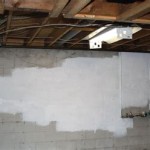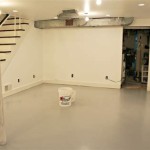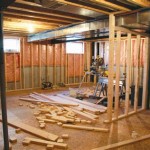Essential Aspects of Installing a French Drain in Your Basement
A French drain, also known as a curtain drain or perimeter drain, is an essential component in preventing water from seeping into your basement and causing flooding or damage. Installing a French drain is a relatively complex process that requires careful planning and execution. Here are some key aspects to consider when installing a French drain in your basement:
1. Determine the Source of the Water Problem
Before installing a French drain, it is crucial to identify the source of the water problem in your basement. Common sources include groundwater, surface water runoff, or plumbing leaks. Once you have identified the source, you can determine the best location for the French drain.
2. Design the French Drain System
The design of your French drain system will depend on the size and layout of your basement, as well as the source of the water problem. A typical French drain system consists of a perforated pipe that is laid along the perimeter of your basement walls. The pipe is then surrounded by gravel or crushed stone to allow water to seep in.
3. Excavate the Trench
Once you have designed your French drain system, you will need to excavate a trench along the perimeter of your basement walls. The trench should be deep enough to accommodate the perforated pipe and the surrounding gravel or crushed stone. The width of the trench will depend on the size of the pipe and the amount of water flow you anticipate.
4. Install the Perforated Pipe
Once the trench is excavated, you can install the perforated pipe. The pipe should be laid at a slight slope to allow water to flow away from your basement. Use a level to ensure that the pipe is installed correctly.
5. Surround the Pipe with Gravel or Crushed Stone
Once the perforated pipe is installed, you will need to surround it with gravel or crushed stone. This material will act as a filter, preventing soil and debris from clogging the pipe. The gravel or crushed stone should be compacted firmly to ensure that it stays in place.
6. Connect the Drain to a Sump Pump
In most cases, you will need to connect the French drain to a sump pump. A sump pump is a device that pumps water out of your basement and discharges it outside. The sump pump should be installed in a low-lying area of your basement, such as a utility room or crawl space.
7. Backfill the Trench
Once the French drain system is installed, you can backfill the trench with the excavated soil. Compact the soil firmly to ensure that it does not settle.
8. Maintain the French Drain
To ensure that your French drain continues to function properly, it is important to maintain it regularly. This includes cleaning the perforated pipe and the surrounding gravel or crushed stone of any debris or sediment buildup. You should also check the sump pump regularly to ensure that it is working properly.
Conclusion
Installing a French drain in your basement is a complex project, but it is an essential step in preventing water damage. By following these steps, you can ensure that your French drain system is installed correctly and will provide years of protection for your home.

French Drain Vs Waterguard Interior Drainage System

Basement Sump Pump French Drain Installation Basements Love Us

Dealing With Basement Water From The Inside Greenbuildingadvisor

Thin Floor French Drain System In Philadelphia Baltimore Ellicott City Pa De And Md Installation Pennsylvania Delaware Maryland

French Drain Installation Basement Lifeguard Waterproofing

Is A French Drain The Solution For Wet Crawl Space Seattle Times

Interior Basement Drainage In Pennsylvania Drain System Installed Along The Perimeter Pa

Footing Drain Interior French Pros And Cons Sani Tred

French Drain Installation Ny And Pa 877 885 2268 Vulcan Basement Waterproofing

French Drain For A Basement Toms River Patch
Related Posts







